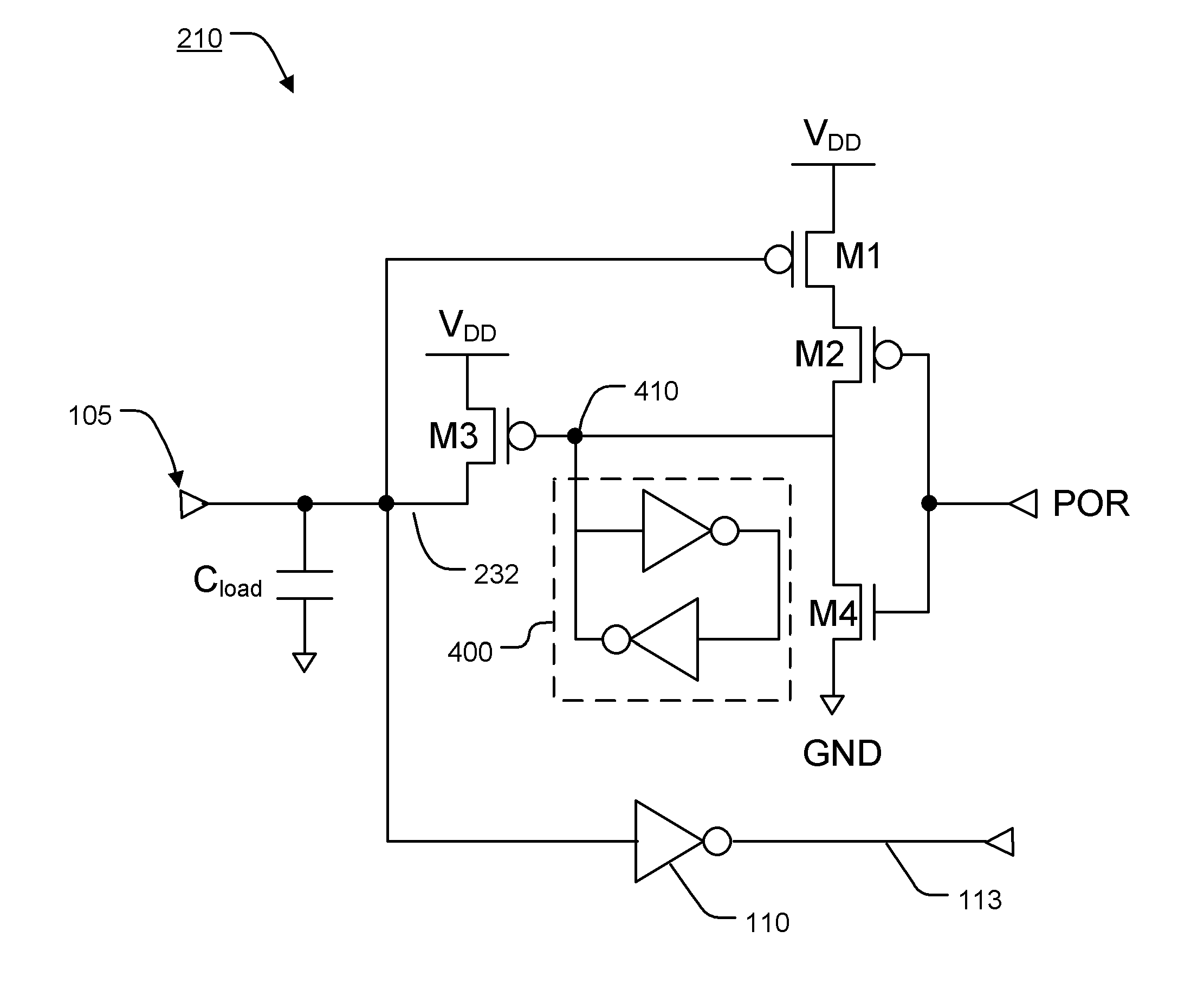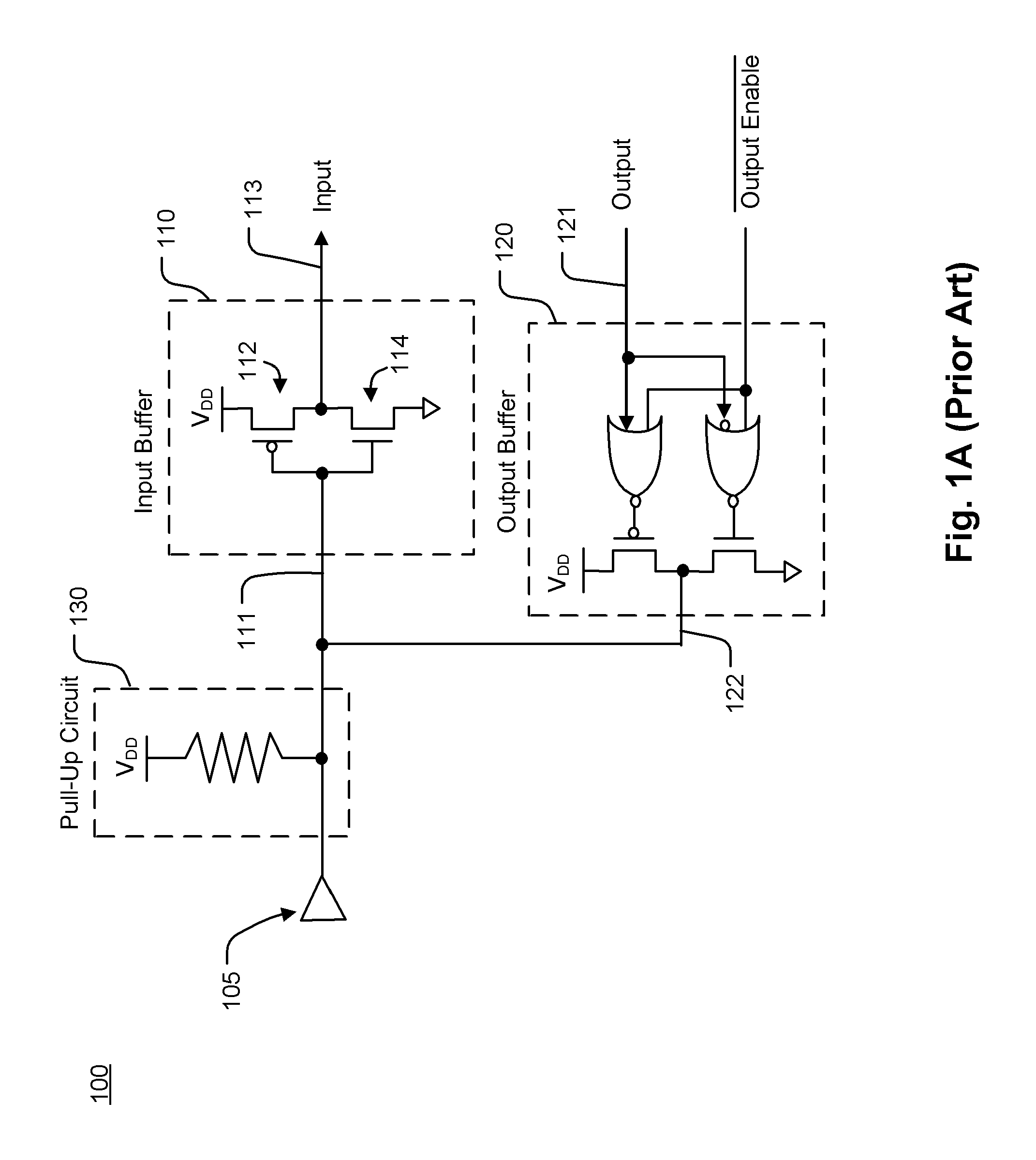Apparatus and method to tolerate floating input pin for input buffer
a floating input pin and buffer technology, applied in the field of integrated circuit pull-up and pull-down circuitry for input/output pads, can solve the problems of increasing the power consumption of the device, unpredictability of the operation of input buffer circuitry connected to the pad, and damage to the input buffer circuitry, so as to achieve the effect of saving power and high speed operation
- Summary
- Abstract
- Description
- Claims
- Application Information
AI Technical Summary
Benefits of technology
Problems solved by technology
Method used
Image
Examples
first embodiment
[0044]FIG. 4 illustrates the input buffer circuitry 210 for the integrated circuit device 200. As shown in FIG. 4, the input buffer circuitry 210 includes PMOS pass transistor M3 having a first conduction terminal connected to the output terminal 232, a second conduction terminal connected to a reference voltage (VDD in this example), and a control terminal coupled to a terminal of the latch circuit 400 at node 410. The pass transistor M3 is turned-on and off to selectively couple the output terminal 232 to reference voltage VDD, depending upon whether the state of the latch 400 is low or high.
[0045]The latch 400 can be implemented using a pair of cross-coupled invertors. Alternatively, other circuits may be used to implement the latch 400.
[0046]FIG. 5 illustrates an embodiment of a timing diagram for operating the architecture of FIG. 4 using the methods described herein. As will be understood the timing diagram of FIG. 5 is simplified and not necessarily to scale.
[0047]The sequenc...
second embodiment
[0056]FIG. 6 illustrates the input buffer circuit 210 used to pre-charge the pad to a low reference voltage (ground in this example) in response to the initialization event, and monitoring the voltage on the pad to detect a change indicating the pad is being pulled high.
[0057]As shown in FIG. 6, the input buffer circuit 210 includes an NMOS pass transistor M6 having a first conduction terminal connected to the output terminal 232, a second conduction terminal coupled to ground, and a control terminal coupled to latch circuit 400 at node 610. The pass transistor M6 is turned on and off to selectively couple the output terminal 232 to ground, depending upon whether the state of the latch is high or low.
[0058]FIG. 7 illustrates an embodiment of a timing diagram for operating the architecture of FIG. 6 using the methods described herein. As will be understood the timing diagram of FIG. 7 is simplified and not necessarily to scale.
[0059]In response to the initialization event at time T1,...
PUM
 Login to View More
Login to View More Abstract
Description
Claims
Application Information
 Login to View More
Login to View More - R&D
- Intellectual Property
- Life Sciences
- Materials
- Tech Scout
- Unparalleled Data Quality
- Higher Quality Content
- 60% Fewer Hallucinations
Browse by: Latest US Patents, China's latest patents, Technical Efficacy Thesaurus, Application Domain, Technology Topic, Popular Technical Reports.
© 2025 PatSnap. All rights reserved.Legal|Privacy policy|Modern Slavery Act Transparency Statement|Sitemap|About US| Contact US: help@patsnap.com



